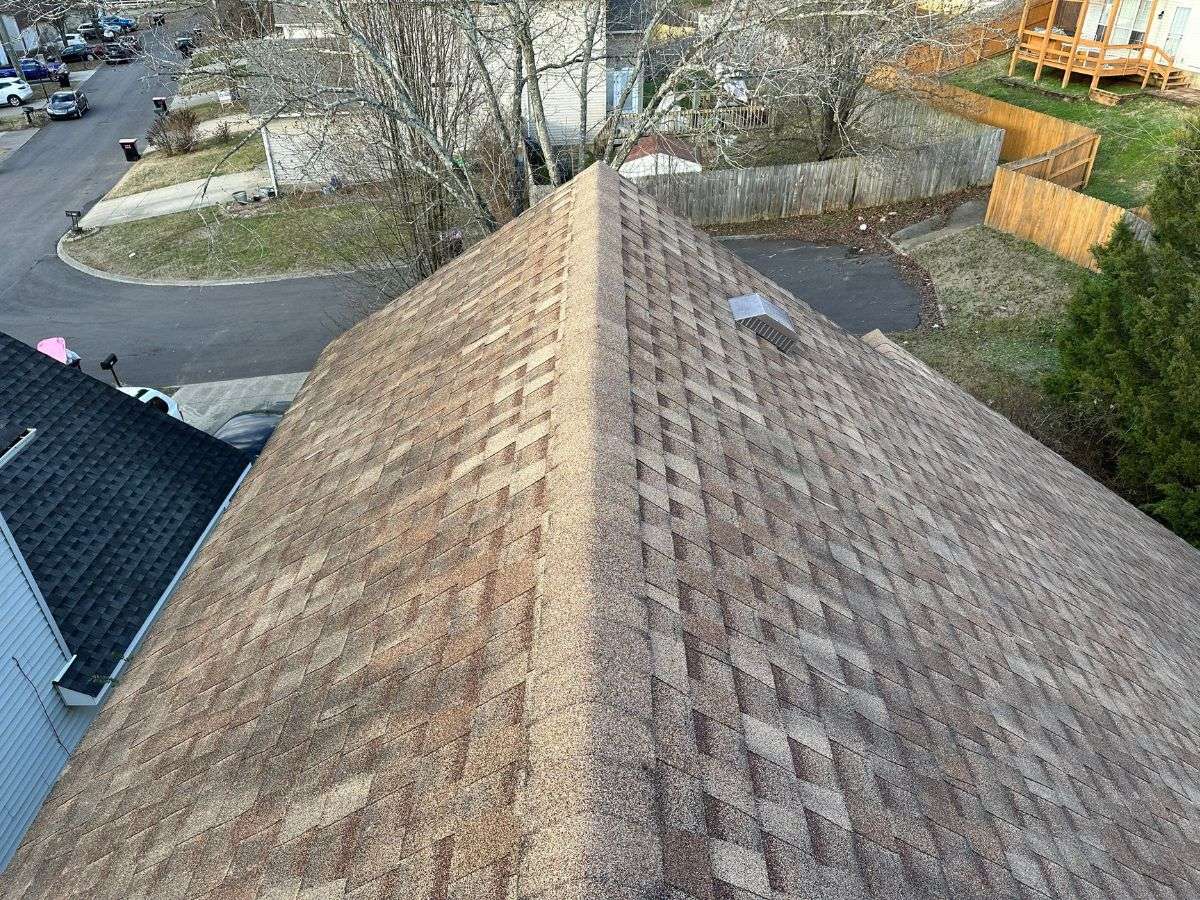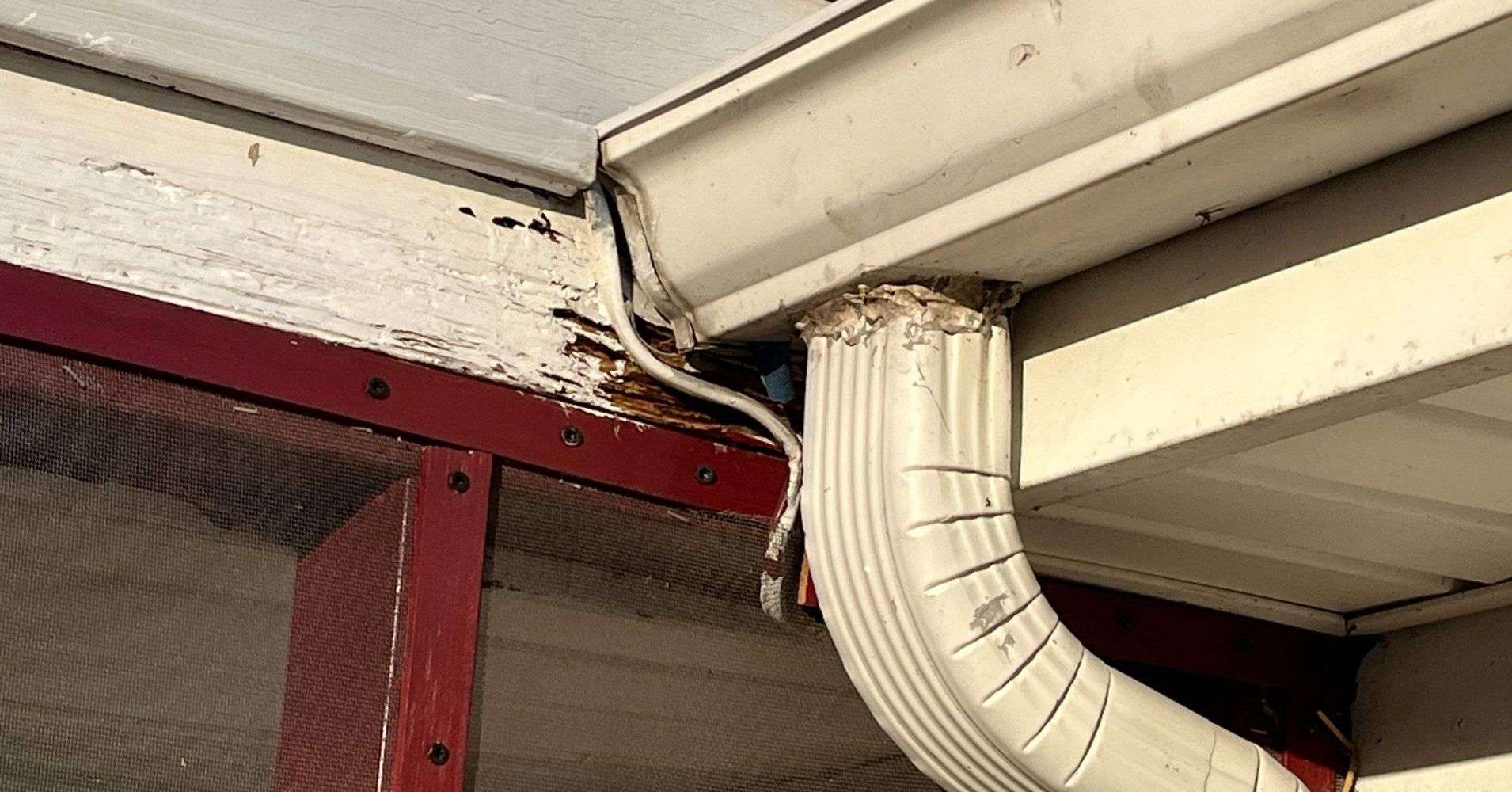Roof Repair or Roof Replacement?
Deciding between roof repair and replacement can be a tough call for homeowners. Some people put off fixing their roof until they notice things like water damage inside or dry-rot damage outside caused by leaks. Others jump straight to a roof replacement, even though repairs might extend its life. On top of that, real estate transactions can get delayed or canceled when buyers—especially those with tight budgets—need a roof certification from their lender, only to find out they need an expensive roof overhaul.
In this article, we’ll break down the pros and cons of repairing vs. replacing your roof and highlight some key points to consider.
Roof Age:
When a roof is installed, it’s designed to last a certain number of years. Knowing when your house was built or if the roof’s been replaced before can give you a good idea of how much life it has left. This info is especially useful for planning future maintenance or replacements.
To find out, you can check with your city or county building department to see when the last roof permit was issued. It’s a simple step that can give you valuable insights into your roof’s condition and help you prepare for any upcoming costs.
Material Lifespans:
The lifespan of your roof depends on the material, the environment, and how well it’s been maintained. While the manufacturer’s warranty gives a ballpark figure, it’s not an exact science. With proper care, some roofs last much longer than expected, while others might wear out sooner due to neglect or harsh conditions. Here’s a quick look at the general lifespan of various roofing materials:
- 3-Tab Composition (20 Years): Budget-friendly but has a shorter lifespan.
- Dimensional Composition (25-40 Years): Sturdy and more damage-resistant, popular for modern homes.
- Presidential Composition (40-50 Years): A premium option for durability and curb appeal.
- Tile (40-50 Years): A classic, long-lasting choice that looks great in many regions.
- Wood Shake (20-30 Years): Natural and rustic but needs more upkeep and fire treatment.
- Steel (40-50 Years): Long-lasting and tough, though it may need extra soundproofing for noise.
Choosing the right material for your needs and environment can save money and prevent expensive repairs down the road.
Sun Exposure:
Sun exposure has a big impact on how fast your roof ages. The south side of your house gets the most sunlight throughout the day, while the north side stays mostly shaded. This uneven exposure means the south side of your roof wears out faster over time.
For example, asphalt shingle roofs often lose granules on the south side, exposing the underlayment. Similarly, wood shake shingles on the south side tend to become dry, brittle, and more worn out. If tiles break or granules wear away significantly, the underlayment below can crack, letting rainwater into your attic during storms.
Because of this, repairs on older roofs often focus on the southern areas. Homeowners should pay extra attention to these sections during inspections. Regular maintenance, like replacing missing tiles or reinforcing weak spots, can help prevent bigger problems later and keep your roof in good shape for longer.
By staying on top of these issues, you can protect your home from water damage and extend the life of your roof.

Existing Leaks or Damage
If your roof is leaking or has damaged shingles, it might be time for a full roof replacement to keep your home properly protected. While it may seem like a big upfront cost, replacing the entire roof can actually save you money in the long run. Constant repairs can add up quickly and might not fix any deeper structural problems.
Plus, patching things up repeatedly can leave your roof vulnerable, especially in bad weather. That said, if the leaks are small and the roof’s structure is mostly in good shape, a repair might do the trick.
For minor issues, like a few damaged or missing shingles, a roofing pro can perform something called a brittle test. This checks if the surrounding shingles are too fragile to handle repairs or if they’re sturdy enough to fix without causing more problems. Even if the damage looks small, sometimes a replacement makes more sense as a long-term fix to avoid future headaches.
If you’re dealing with gutter leaks or fascia problems, these can often be handled with targeted repairs instead of replacing the whole roof. But if the leak is coming from under your shingles, there’s mold, or the underlayment is in bad shape, a full replacement might be your best bet.
Ignoring this kind of damage can lead to bigger problems later, like water seeping into your home or structural issues. Always have a professional roofer take a look so they can give you expert advice for your specific situation.

WAS YOUR HOME DAMAGED IN A STORM?
Storms can wreak havoc on your roof, and the damage often needs quick attention. High winds, hail, and heavy rain can cause problems you might not notice right away, like cracks, loose shingles, or water trapped under the layers of your roofing. In many cases, storm damage is bad enough to require a full roof replacement instead of just a repair. Replacing the roof gives your home better protection and peace of mind for future storms.
After a storm, a roofing inspector can assess the damage and determine if you’re eligible for a homeowners insurance claim. Depending on the severity, the claim could cover repairs or a full replacement. Roofers often recommend a complete replacement after a major storm, as the damage can weaken the roof’s structure over time and increase the risk of future water issues. Plus, a new roof can boost your home’s energy efficiency and resale value.
Storm damage isn’t always obvious, so even if you don’t see any major problems, it’s a good idea to schedule an inspection. A pro can spot hidden issues like weakened flashing, damaged underlayment, or small leaks that could get worse. Tackling storm damage early can save you from expensive repairs and bigger problems down the road.
PRO’S & CON’S OF ROOF REPAIR
Pros:
- It’s budget-friendly in the short term and usually costs less than a full roof replacement. This is great if you’re on a tight budget or need a quick fix without committing to a big expense.
- When done right, repairs can extend your roof’s life by tackling specific issues like leaks, missing shingles, or minor wear and tear from weather.
- Perfect for fixing small damages or isolated leaks without messing with the whole roof, making it a quick and practical solution in the right situations.
Cons:
- While repairs might seem cheaper at first, costs can pile up if problems keep coming back. Sometimes, multiple repairs can end up costing more than replacing the roof altogether.
- Repairs often address surface-level issues but might miss deeper problems like structural damage, poor ventilation, or rot, which could lead to bigger headaches later on.
- When it’s finally time for a full roof replacement, previous patchwork repairs might make the process more complicated and expensive, with some areas needing to be redone to ensure everything fits together properly.
PRO’S & CON’S OF ROOF REPLACEMENT
Pros:
- A full roof replacement doesn’t just fix surface problems—it also takes care of hidden issues like poor insulation, structural weaknesses, or ventilation problems. It’s a long-term solution that gives you peace of mind.
- A brand-new roof can make your home look amazing and increase its value, especially if you’re planning to sell or just want a fresh look.
- Financing options are often available through lenders, banks, or roofing contractors, so you can spread out the roof replacement cost with manageable monthly payments.
- In some cases, your homeowners insurance might cover part or all of the cost if the damage is due to storms, hail, or other weather events.
Cons:
- The upfront cost of a roof replacement is much higher than repairs, which can be tough to handle at first. That said, it often saves money in the long run by eliminating constant repair expenses.
- Replacing a roof takes more time and effort, meaning you’ll need to deal with a longer project timeline and some disruption to your daily routine.
- If you’re filing an insurance claim to help cover costs, it can be a lengthy process with extra paperwork and inspections, which might delay the start of the roofing project.
WHAT’S YOUR GOAL?
Deciding whether to repair or replace your roof really comes down to your needs and long-term plans. If you’re planning to stay in your home for many years, a full roof replacement might be the better choice. It offers greater durability, better energy efficiency, and can even boost your property’s value over time. It’s a smart investment to protect your home and keep it in great shape for decades.
But roof repairs can also be the right call in certain situations. For example, if you’re prepping to sell your home and just need a quick fix to pass inspections, or if you’ve got future renovations coming up that will involve roof changes, a repair might make more sense in the short term. In these cases, getting a roof certification can be a great option.
Professional roofing companies can inspect your roof, handle any needed repairs, and certify its condition for a set period, giving you—and potential buyers—peace of mind.
ALWAYS GET A SECOND OPINION:
When deciding between a roof repair or replacement, it’s crucial to get a thorough inspection from an experienced roofing pro. Not all inspections are created equal—some companies might miss important details or push for unnecessary work. To make sure you’re making the best decision, it’s always smart to get a second opinion from another trusted roofer. A fresh perspective can help clear up any doubts and give you a better understanding of your options.
DECIDED BETWEEN ROOF REPAIR AND ROOF REPLACEMENT, WHAT NEXT?
Once you’ve made your choice, the next step is gathering all the info you need to move forward with confidence. Reach out to a trusted roofing professional in your area to schedule a detailed inspection. Use the results from the inspection—and any applicable homeowners insurance coverage—to plan your next steps.
While we typically recommend roof replacements for long-term benefits, we get that every situation is different. Repairs can be the better option in some cases, especially if they align with your current goals or fit your budget.
If you’re in Middle Tennessee or Georgia and need help deciding—or if you’re ready to move forward with a roof replacement or repairs—give Roof MD a shout. We offer FREE in-depth roof inspections to help you figure out the best path forward. Just fill out the quick form below, and we’ll find a time that works for you. Let us help you protect your home with a strong, reliable roof!
